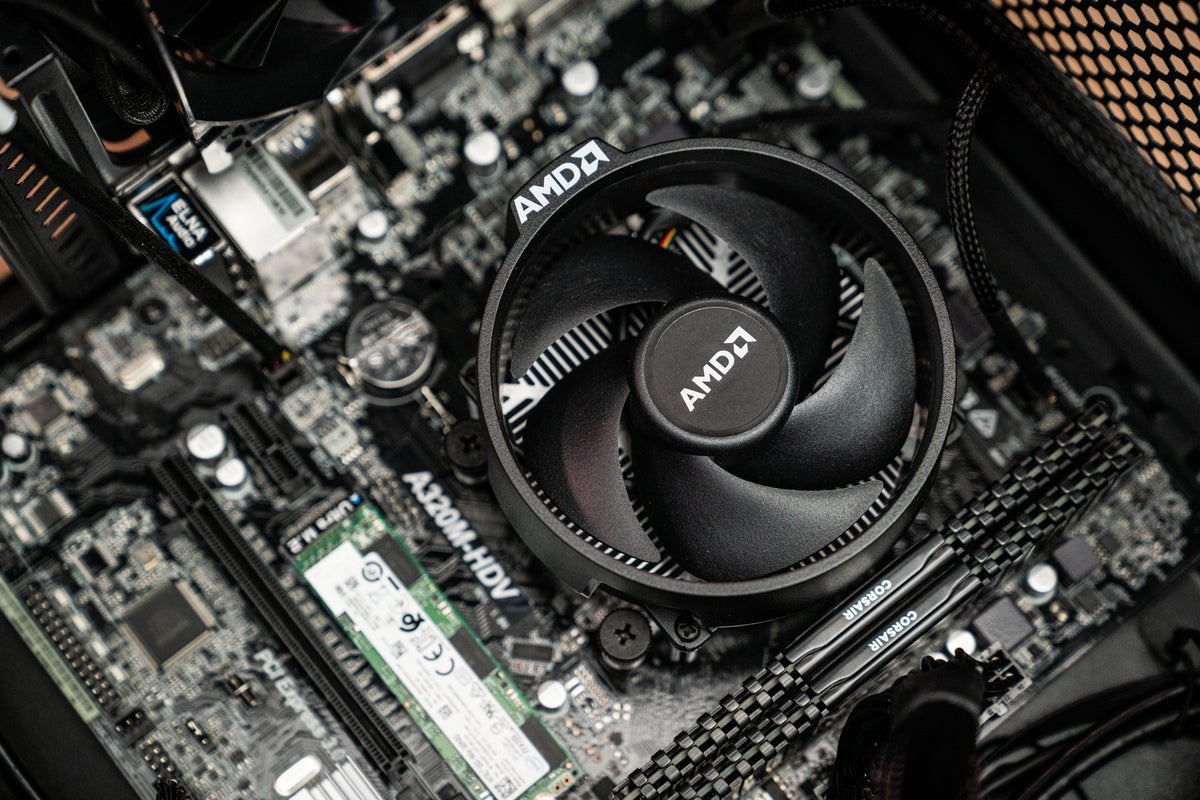How to check your PC specs in Windows 10
Knowing the specifications of your Windows 10 PC can be very helpful. Whether it’s knowing how much space is on your storage drives or whether you can run a video game at its recommended settings, being able to find and know your PC’s specs will help you figure out what to expect. make sure you are able to do what you need to do, or whatever to upgrade if something is missing.
There are a variety of methods to find your PC specifications in Windows 10, both with the standard tools that come with Windows 10 as well as various third-party software solutions.
Find the base specs in Windows 10
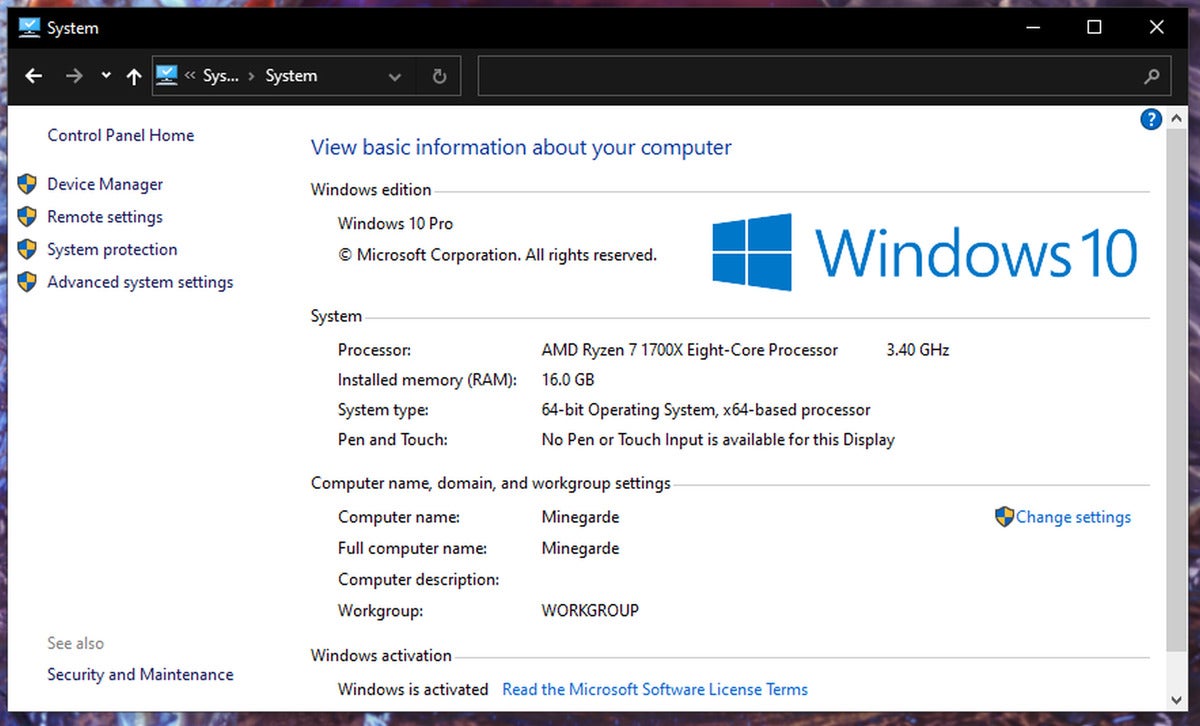 Kevin Casper / IDG
Kevin Casper / IDGThere is a space in the Windows 10 Control Panel that can provide you with the basics of your PC specifications, including your processor type and speed, the amount of RAM installed, and the operating system version. To get here, you can use the keyboard shortcut of Win + Pause / Pause, or you can find it by following the steps below:
- Open your start menu
- Type / Search for “Control Panel”
- Find and click “System and Security” in your control panel window
- Find and click “System” or “Show amount of RAM and processor speed” in the new view
Using the Performance tab of the task manager
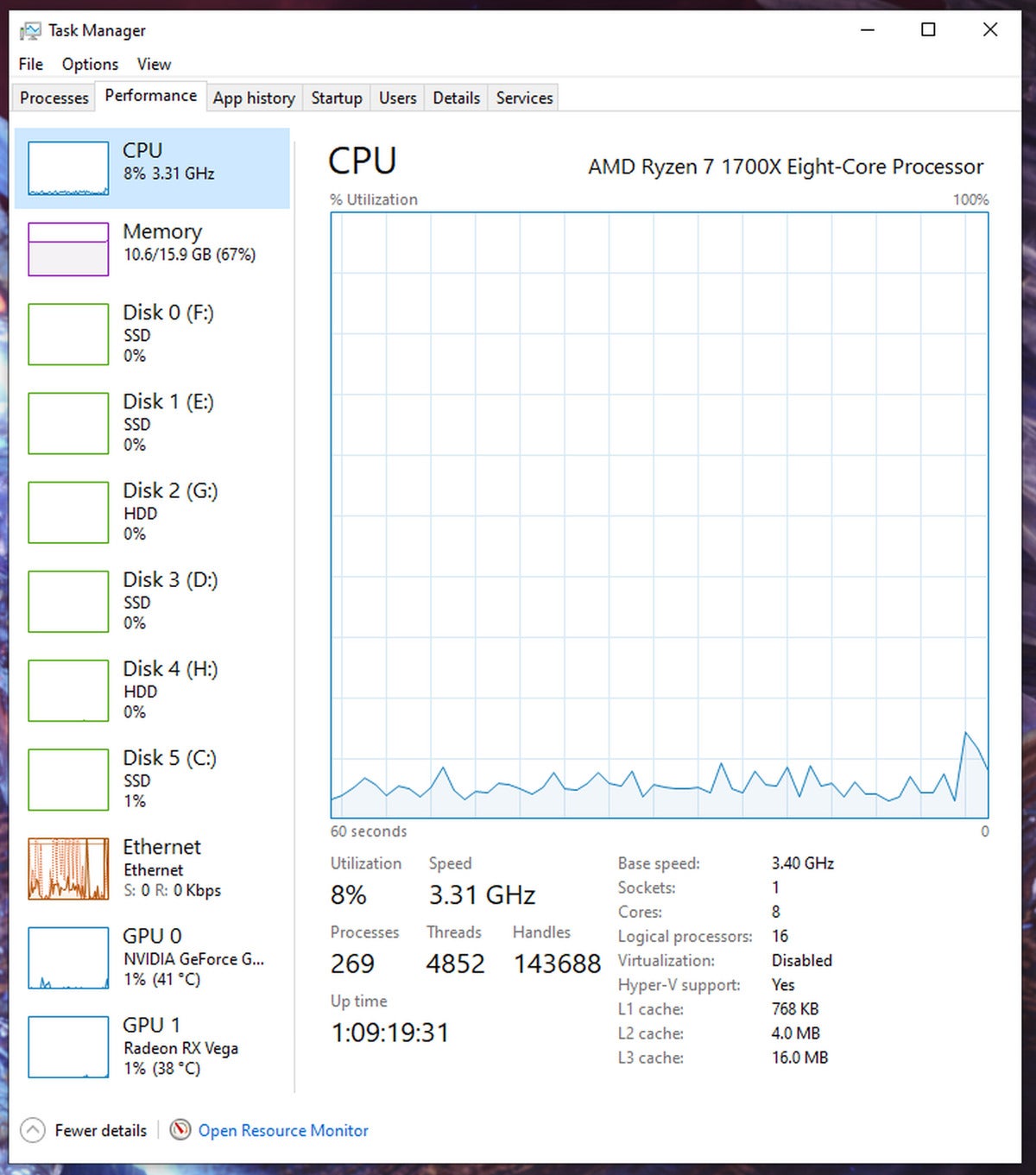 Kevin Casper / IDG
Kevin Casper / IDGThe ever popular task manager that people often use to close a frozen program includes a Performance section in Windows 10 that gives you a quick overview of your active hardware specs, along with graphics and information about their level of performance. activity.
To open Task Manager, there are two keyboard shortcuts:
- Ctrl + Shift + Esc
- Ctrl + Alt + Del, then click on “Task Manager” in the selection
Additionally, you can find and open Task Manager through the Start menu:
- Open your start menu
- Type / search for “Task Manager”
- Click on the result of the “Task Manager” application to open it
Once the Task Manager opens, you should be able to see a tab titled “Performance”, which you can click. Under the Performance tab, you should see on the left side lists for your CPU, memory (or RAM), disk drives, network connections, and graphics devices, if applicable. Clicking on any device will display additional information about the device as well as information about current activity, such as CPU power or RAM used by your PC.
Using the Windows 10 System Information Tool
 Kevin Casper / IDG
Kevin Casper / IDGWindows 10 includes a more robust tool called System Information that can provide you with more detailed specification information. To open the System Information tool:
- Open your start menu
- Type / search for “System Information”
- Click on the result of the “System Information” application to open it
The initial page of the System Information tool is a comprehensive summary of your PC’s specifications, including detailed information about your operating system, processor, BIOS, motherboard, RAM, etc. You can find additional information through the category tree in the left pane of the window, especially under “Components”. Some of the terminology used in this tool may not match words you are familiar with, so here are some definitions to help you:
- Processor = CPU
- Base card = Motherboard
- Physical memory = RAM
- (In the category tree) Display = Graphics device
- (In the Components> Display category) Name = Graphics card
- (In the category tree, under Storage) Drives = The formatted partitions of the disk space where you store your files, such as C: and D:
- (In the category tree, under Storage) Disks = The physical storage hardware on your computer that contains formatted drives
Use of third-party tools
There are a variety of PC specification and performance monitoring solutions available, but two solid options that can provide a complete view of your PC’s hardware and specification information include HWiINFO and Species.
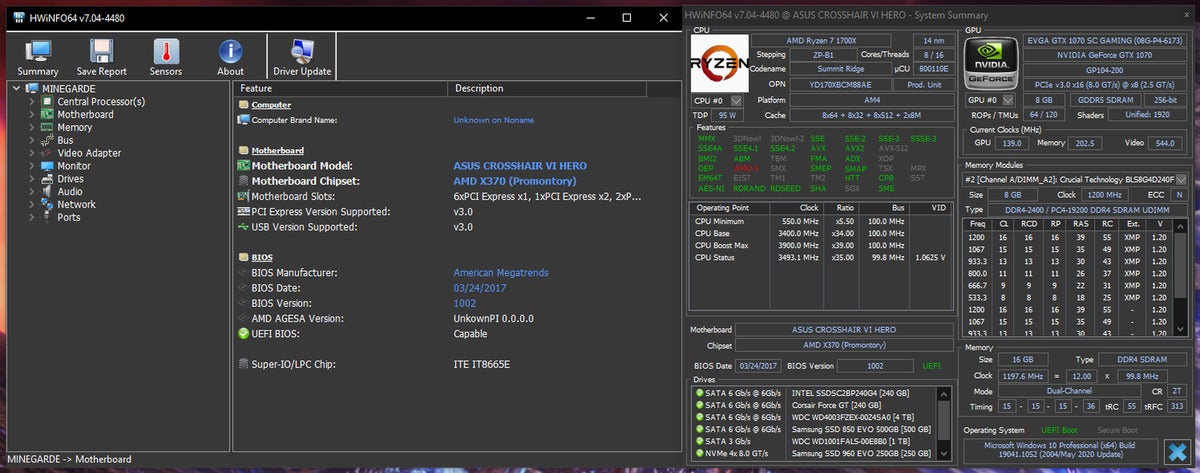 Kevin Casper / IDG
Kevin Casper / IDGHWInfo
HWiNFO provides something similar to both the Performance tab of Windows 10 Task Manager and the System Information tool, but with more detail. HWiNFO can tap into the various sensors on your PC to get a direct overview of various hardware features, processor speeds, and voltage settings.
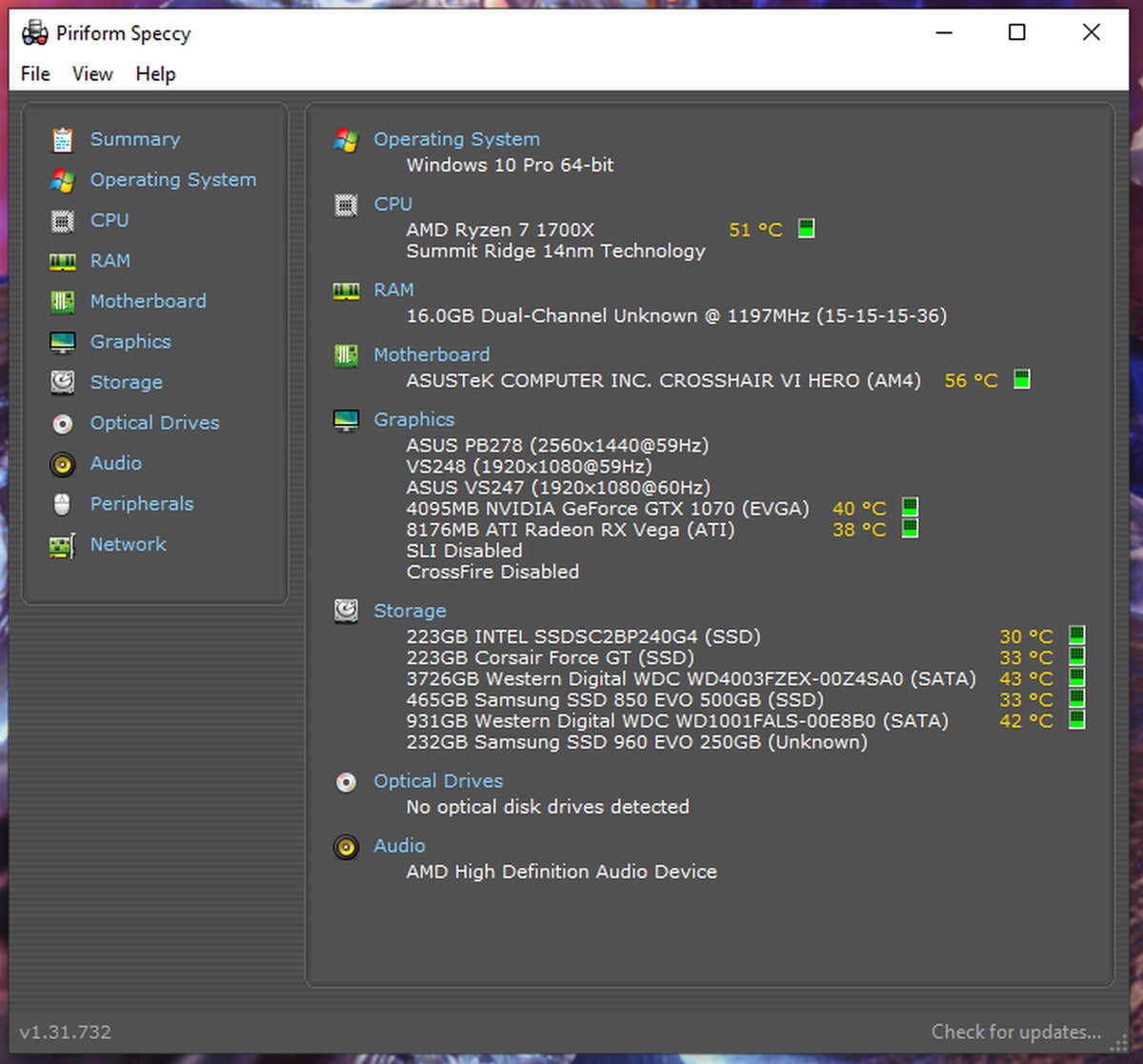 Kevin Casper / IDG
Kevin Casper / IDGSpecies
Speccy is generally the more user-friendly version of these two tools, providing a solid summary page with virtually all the hardware specification information you need for most applications and requirements. It has clickable links to various component sections for more detailed information, if you need it.
Now that you are equipped with the knowledge to find the specifications of your PC, you can determine whether or not it can work. Loss or if you really need more RAM.

